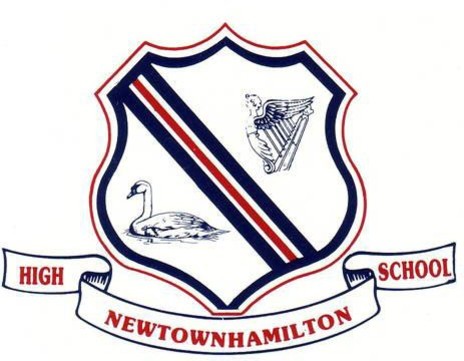Technology & Design
Technology & Design at Newtownhamilton High School
Technology & Design is a subject which lies within the Science and Technology Learning Area in the Northern Ireland Curriculum. It is primarily a practical subject, where the key activities are problem solving through design, manufacture of solution and evaluation of outcome.
The Technology and Design department has established a number of aims. These aims focus on Technological Capability:
To develop Technology & Design capability commensurate with each pupil’s ability;
To foster awareness, understanding and expertise in those areas of creative thinking which can be expressed and developed through investigation and research, planning, designing, making and evaluating;
To encourage the acquisition of a body of knowledge applicable to solving practical/technological problems through the processes of analysis, synthesis and realisation;
To stimulate the development of a range of communication skills which are central to the technological process;
To supplement Application of Number skills through the technological process;
To stimulate the development of a range of making skills;
To stimulate the development of a range of ICT skills;
To encourage pupils to relate their work, which should demand active and experimental learning based upon design and making in a practical context, to their personal abilities and interests;
To foster attitudes of co-operation and social responsibility, understand the impact of technology on the environment, and to develop capabilities that enhance the quality of that environment;
To promote the development of curiosity, enquiry, initiative, ingenuity, resourcefulness and discrimination;
To encourage technological awareness;
To stimulate the exercising of value judgements of an aesthetic, technical, economic and moral nature.
Key Stage 3
In Years 8, 9 and 10 our pupils have 3 timetabled periods per week of Technology & Design classes. Within these classes pupils learn a variety of relevant skills that will equip them for life in a technological society. Class and homework is based around projects or design tasks. As pupils work through these projects they acquire new skills and knowledge.
Year 8 - Practical projects (wooden toy, CNC Christmas tree, SolidWorks and Towers of Hanoi)
Year 9 - Practical projects (Paint tin opener, involving levers, CNC ice-scraper, storage pot and CNC pencil holder)
Year 10 - Practical projects (Child’s night light, CNC desk tidy, CAD for MP3 design, CNC for MP3 Player)
GCSE
Technology & Design provides an opportunity to design and make a real product. It allows you to create something to solve a problem that you have identified. As part of the course you will study the areas of designing, communicating, manufacturing, electronics, mechanical systems and pneumatics. You will learn how these technological developments have influenced the way that we live and work. At GCSE we study AQA Design Technology and pupils enjoy the challenges this brings. Students get the opportunity to work with various material including the traditional wood and metal as well as new Smart and Composite materials.
The GCSE consists of the following:
Written Paper
50% of the total marks
120 marks
2 hours
One paper with two sections:
Section A
30 marks
Multiple choice questions based on Core Technical Principles
Section B
90 marks
More detailed questions focused on Specialist Technical Principles
NEA –Non-Exam Assessment
50% of the total marks
90 marks
A single design-and-make activity selected from a choice of 3 pre-set tasks, consisting of the development of a made outcome and a concise design folder and/or appropriate ICT evidence. These tasks are reviewed every two years.
The design folder should consist of approximately:
20 pages of A3 paper
equivalent A4 paper
or the ICT equivalent.
It is expected that students should spend approximately 35 hours on this activity.
As part of the evidence submitted, students should include photographs of the finished products as well as photographs at various stages of the process.
Further information relating to this course can be found here.
Career Possibilities
|
Aeronautical Engineer |
Electrician |
Software Designer |
|
Architect |
Electronic Engineer |
Sound and Lighting Engineer |
|
Sutomotive Engineer |
Fashion Designer |
Structural Engineer |
|
Computer Software Engineer |
Plumber |
Teacher |
|
Design and Development engineer |
Product Designer |
Textile Designer |




